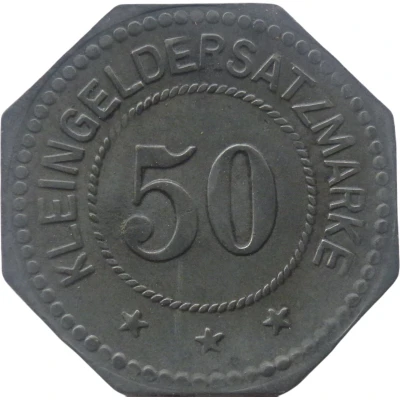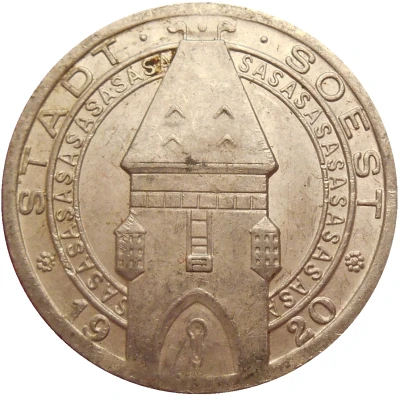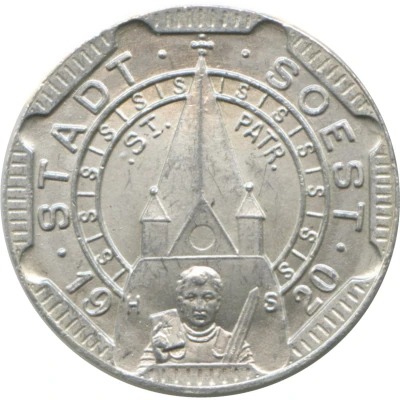


© Willem63 (CC BY-NC-SA)
50 Pfennigs - Soest
1917 year| Zinc | 2.9 g | 24.3 mm |
| Issuer | City of Soest (notgeld) (Prussian province of Westphalia) |
|---|---|
| Emperor | William II (Wilhelm II) (1888-1918) |
| Type | Standard circulation coin |
| Year | 1917 |
| Value | 50 Pfennigs (50 Pfennige) (0.50) |
| Currency | Mark (1914-1924) |
| Composition | Zinc |
| Weight | 2.9 g |
| Diameter | 24.3 mm |
| Thickness | 1.1 mm |
| Shape | Octagonal (8-sided) |
| Technique | Milled |
| Orientation | Medal alignment ↑↑ |
| Demonetized | Yes |
| Updated | 2024-10-04 |
| Numista | N#353535 |
|---|---|
| Rarity index | 94% |
Reverse
Pearl rim, legend surrounding rope circle with denomination centered
Script: Latin
Lettering:
KLEINGELDERSATZMARKE
50
★ ★ ★
Edge
Plain
Interesting fact
One interesting fact about the 50 Pfennigs - Soest 1917 coin is that it was made of zinc, which was a unusual material for coins at that time, as most coins were made of metals like copper, silver, or gold. The use of zinc was likely a result of the wartime economy and the need for alternative materials due to the shortage of traditional metals. This coin is a unique example of how the First World War influenced the production of currency.



